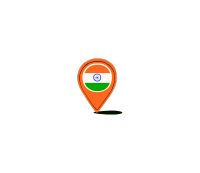What were the major challenges faced by the Indian Army during the Kargil War
1. High-Altitude Terrain and Harsh Weather The conflict took place in extremely challenging mountainous terrain, with peaks ranging from 16,000 to 18,000 feet. The thin air and freezing temperatures not only made movement and combat difficult but also had negative physiological effects on soldiers, such as altitude sickness and fatigue. Avalanches, crevasses, and adverse weather conditions contributed to significant casualties and complicated operations. 2. Surprise and Intelligence Failure There was a major intelligence lapse: Indian agencies did not detect the large-scale infiltration of Pakistani troops in advance, resulting in a lack of preparedness. The infiltration was only discovered after local shepherds reported suspicious activity, forcing the Army into a reactive posture. 3. Well-Entrenched Enemy Positions Pakistani troops occupied commanding heights, giving them a tactical advantage for observation and firing. The Indian Army had to launch uphill assaults against well-fortified positions, often under heavy enemy artillery and small arms fire. 4. Logistical and Supply Difficulties Supplying troops and moving heavy equipment in the high-altitude, rugged terrain was extremely difficult. The main supply route, the Srinagar-Leh highway, was under constant threat from enemy shelling, risking the isolation of Indian positions. 5. Artillery and Firepower Challenges The enemy was supported by continuous and accurate artillery fire, including the use of advanced gun-locating radars, which made Indian artillery positions vulnerable. The Indian Army had to rely heavily on artillery, especially the Bofors guns, whose effectiveness was enhanced by the thin air but still faced limitations due to terrain. 6. Lack of Weapon Locating Radars The absence of effective weapon-locating radars on the Indian side resulted in higher casualties, as Indian artillery positions were more exposed to enemy counter-battery fire. 7. Tactical Constraints The terrain prevented large-scale divisional or corps-level operations; most battles were fought at the brigade or battalion level, requiring small groups to scale steep, often vertical, slopes under fire. 8. Camouflage and Concealment by the Enemy Pakistani troops used effective camouflage and the natural cover of the rugged terrain to conceal their positions, making detection and targeting difficult for Indian forces. In summary, the Indian Army overcame severe environmental, tactical, and intelligence challenges through determination, adaptation, and effective use of artillery to reclaim the occupied territory during the Kargil War.
5/19/20251 min read
Operation Sindoor
Justice Delivered: Fight Against Terror.
Contact Us:
Service
operationsindoor0507@gmail.com
© 2025. All rights reserved.



